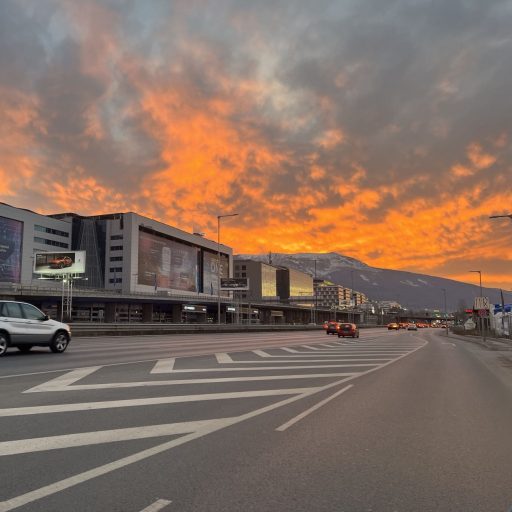
Lasvit’s hand-blown Charming Deeps installation anchors Regent Phu Quoc’s design approach as a crystalline meditation on Vietnam’s marine ecology.
Regent Phu Quoc
Beyond the cuisine, coffee, and coastline, Vietnam’s design-forward hotels have also become one of the country’s most compelling draws. A product of its two-decade economic ascent, the hospitality sector has evolved into fertile ground for some of Asia’s most ambitious architectural and aesthetic experimentation. Increasingly, international designers are working in close collaboration with Vietnamese artists, artisans, and craftspeople to translate the country’s layered identity into spaces that reflect both local nuance and global sophistication. The result is a distinct design language—rooted in cultural diversity and shaped by an ongoing dialogue between heritage and modernity.
This evolution reflects a broader shift in global luxury travel, where substance now matters more than spectacle. Today’s discerning travelers prioritize cultural depth, architectural storytelling, and a sense of place over superficial opulence. In 2024, Vietnam welcomed 17.5 million international visitors—a nearly 40 percent increase—driven in part by rising demand for destinations that combine refined hospitality with meaningful local connection. In response, many of the best luxury hotels in Vietnam are embracing regional architecture, traditional craft, and narrative design as core elements of their guest experience.
As travelers venture beyond the cultural anchors of Hanoi and Ho Chi Minh City—into Vietnam’s interior provinces, coastlines, and highland regions—they’re met with a new wave of design experimentation. In the cities, French colonial relics are being reinterpreted and revamped through a distinctly Vietnamese lens. Along the coast, luxury resorts in Da Nang, Phu Quoc, and Hoi An fuse indigenous materials with ecological awareness to create truly resonant environments that translate a cultural anthology, rendered in timber, lacquer, and stone.
Dramatic seaside corridor in InterContinental Danang’s Rock Villa reveals stunning ocean views through wood-framed doorways
InterContinental Danang Sun Peninsula Resort
InterContinental Danang Sun Peninsula Resort (Da Nang)
Bill Bensley’s breakthrough work at InterContinental Danang Sun Peninsula Resort was the project that catapulted him to international stardom. It all unfolds across four levels carved into the jungle: Heaven, Sky, Earth, and Sea. Throughout the property’s public pavilions and room categories, you’ll find a stark black and white palette jolted with citrus bursts; meanwhile, ancient Vietnamese temple motifs clash deliberately with California oddities like cast iron ostriches and surfboard tables. The monkey obsession borders on fetishistic—from urinating primate fountains to papier-mâché busts—as well as Instagram bait like inverted (and seemingly suspended) non-la hat dining platforms and Long Bar’s namesake 164-foot counter flanked by fisherman basket chairs. Indigenous craftsmanship appears where you least expect it, with mother-of-pearl inlays and Bat Trang ceramics turning even bathrooms into performance spaces. Crowning it all like a bird’s nest is Tingara, a “bird’s nest” restaurant where Michelin-starred chef Junichi Yoshida serves omakase against panoramic seascapes.
Contemporary Vietnamese artworks transform The Gallery at Regent Phu Quoc into a vibrant cultural bridge between tradition and modernity.
Regent Phu Quoc
Regent Phu Quoc (Phu Quoc Island)
BLINK Design Group founder Clint Nagata envisioned Regent Phu Quoc as a study in spatial restraint—a sanctuary where subtraction reveals substance. Rooted in the rhythms of fishing villages and tidal flow, the design privileges quiet material statements, such as laterite stone quarried from the Vietnamese highlands, handwoven rattan by village artisans using fading techniques, and bronze accents that shift with the coastal light. Art is not an afterthought but an axis. Charming Deeps, a suspended glass sculpture by Czech studio Lasvit, its hand-blown forms parlaying the fragility of Phu Quoc’s coral ecosystem into a striking visual anchor. The newly launched Gallery, conceived in collaboration with Hanoi’s CUC Gallery, expands the hotel’s design dialogue into contemporary Vietnamese art. Its debut show, Dynamics of Identities, featured sculptural work by Hanoi’s Dinh Cong Dat and Thai Nhat Minh alongside painter Nguyen Ngoc Vu (“Rabbit Boy”), whose canvases merge classical Vietnamese forms with pop sensibilities. Elsewhere, Singapore-based Artling curates site-specific installations—monumental lacquer panels and abstract sculptures—infusing the resort with a distinct cultural tempo that’s both local and forward-facing.
At the concierge desk at Park Hyatt Saigon, traditional Vietnamese folk art panels punctuates the French-colonial inspired interiors with color.
Park Hyatt Saigon
Park Hyatt Saigon (Ho Chi Minh City)
Behind its stately white French colonial façade, Park Hyatt Saigon conceals a quietly radical fusion of East–West aesthetics. The District 1 grand dame’s architecture by Chan Soo Khian of SCDA Architects exudes measured elegance, while interiors by Diana Simpson ground the experience in tactile luxury: custom silk, marble, and Hanoia lacquerware crafted by Vietnam’s most skilled ateliers. But its defining feature is the art. Curated by Ben Thanh Art Gallery from 2003–2005, the hotel’s collection is anchored by rare lacquer paintings from Do Xuan Doan (1937–2015), a scion of the medium whose silver-gold compositions evoke dynastic grandeur with modern restraint. Alongside them are works by Bui Huu Hung, including Summer Landscape, Royal Lady, and Couple Crane in Golden Land—pieces that elevate the hotel’s public spaces into a de facto museum of Vietnamese fine art. Following a 2015 renovation, management made the deliberate choice to preserve this trove intact—a move that now reads as visionary, as the value and cultural relevance of these works have only compounded with time.
Floor-to-ceiling glass doors frame the Four Seasons Nam Hai’s elegant villa living space, where minimalist Asian design elements perfectly complement the pristine beachfront view of palm trees and turquoise waters.
Four Seasons Hotels and Resorts
Four Seasons Resort The Nam Hai (Hoi An)
French architect Reda Amalou, along with the late great Indonesian designer Jaya Ibrahim created this five-star property as a meditation on Vietnamese spatial philosophy. Inspired by the traditional garden houses of Hue, the villas are temples of pared-back luxury: timber-framed structures with soaring pitched roofs, elevated sleeping platforms veiled in gauzy nets, and decorative panels that refract light like silk lanterns. Each structure follows the logic of phong thủy, aligning elements in harmony with earth and sea. Locally made ceramics from Bat Trang and hand-forged brass from the surrounding region add tactile punches throughout. But it’s Karl Princic’s deft landscaping that delivers the signature coup: a trio of infinity pools, terraced to mirror the beach’s horizon line as it seamlessly dissolves into the East Sea.
Zannier Bai San Ho’s paddy field villa entrance frames a perfect sightline through traditional thatch roofing and bamboo shutters, honoring Vietnam’s vernacular architecture with contemporary restraint.
Zannier Hotels
Zannier Bai San Ho (Phu Yen Province)
Vietnam’s untrammeled Phu Yen coastline hosts this architectural standout where heritage and habitat coexist without compromise. Across nearly 250 acres, 73 villas speak a trio of distinct dialects: stilted paddy field dwellings that echo fishermen’s homes, Cham-inspired Beach Pool Villas, and Ede longhouse interpretations with assertive rooflines that punctuate the hillsides. The interiors avoid the usual ethnic-luxe clichés, instead deploying Vietnamese artifacts and textiles that suggest decades of careful collection rather than decorator’s orders. Most developers would have bulldozed this landscape into submission. Instead, Zannier preserved existing vegetation and engineered against erosion—environmental consciousness that makes neighboring resorts look positively obtuse by comparison.
Bill Bensley’s theatrical vision comes alive in Capella Hanoi’s opera-themed suite, where vintage performance hall artwork and pagoda-inspired lighting create an immersive 1920s fantasy.
Capella Hotels and Resorts
Capella Hanoi (Hanoi)
Bensley’s 47-suite Hanoi hideaway isn’t necessarily subtle, but it is sure is smart. The opera house conceit could have slipped into costume-party territory, but instead delivers surprising depth. Each named suite houses actual theatrical artifacts: makeup-stained costumes, performance ephemera, oddities sourced from Hanoi’s dealers who typically reserve such treasures for serious collectors. The hand-painted murals created by Bensley’s studio artists avoid superfluous decoration, instead crafting surrealistic narratives where Vietnamese and Western operatic traditions collapse in dreamlike sequences that reward closer inspection. Working with French architect Luc Lejeune, the design team managed the difficult trick of period authenticity without sacrificing comfort. Worth noting is the experiential Capella Curates program, which offers guests backstage opera access that typical cultural tourism can’t touch.
Six Senses Con Dao’s oceanfront villa seamlessly blends sustainable teakwood architecture with breathtaking sea views, where billowing white canopies and minimalist design honor Vietnam’s fishing village heritage.
Six Senses
Six Senses Con Dao (Con Dao)
In the remote Con Dao archipelago, conservation is an operating principle. AW² Architecture Workshop’s design at Six Senses Con Dao enshrines this philosophy in its bones, leveraging salvaged teakwood and prefabricated timber frames to minimize environmental impact (a construction method far more complex than conventional building but invisible to the casual observer). Inspired by the look of a traditional fishing village, the property’s 50 villas sit lightly on the land, either elevated on stilts or nestled into protective dunes that maintain the island’s natural defenses. There’s the marine conservation program, too, which represents real science, not symbolic gestures, as it actively restores beaches for endangered green turtle nesting in partnership with local authorities.
Franco Albini’s 1940 re-engineered Veliero “sailing ship” bookcase anchors The Reverie Saigon’s penthouse living room, complemented by Poltrona Frau leather furniture.
The Reverie Saigon
The Reverie Saigon (Ho Chi Minh City)
Audacious, perhaps borderline scandalous—this skyscraper-crowning fantasia seduces with unapologetic maximalism from architect Kent Lui. First-time visitors invariably gasp encountering pieces like Colombostile’s headline-making purple ostrich leather sofa, or Baldi’s malachite and bronze masterpiece timepiece. Then there’s the furniture by Giorgetti, Poltrona Frau, and Visona—all of which tempt with sculptural provocation. Looking upward reveals Murano chandeliers floating like suspended galaxies above rare Carrara marble, while Sicis artisans have transformed entire spa walls into shimmering aquatic dreamscapes that seem to undulate in the light. The penthouse Saigon Suite by Giorgetti is the most gallery-worthy of the hotel’s offerings for its fusion of Saigon’s ambitious energy and Milan’s longstanding design horsepower.

